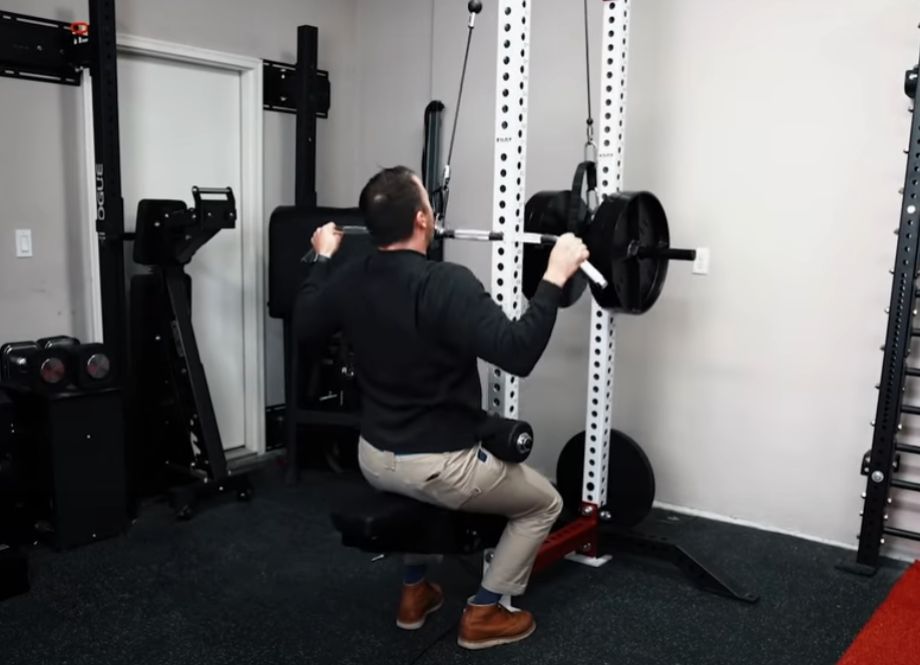We test and review fitness products based on an independent, multi-point methodology. If you use our links to purchase something, we may earn a commission. Read our disclosures.
There are few good, affordable, plate-loadable lat pulldown machines out there. And we should know, because we have tested the best lat pulldown machines for home gyms.
One solution is a DIY lat pulldown.
This is exactly what Coop, the founder of Garage Gym Reviews, did when he wanted a standalone, plate-loaded lat pulldown. It isn’t the most affordable DIY gym equipment, but it will be cheaper than buying one new.
DIY Lat Pulldown Video Tutorial

Benefits of a DIY Lat Pulldown
There are several benefits to creating your own plate-loaded lat pulldown, but there are a couple of caveats to consider, too. For instance, would a standalone item really meet your needs? Or would it make more sense to get a lat pulldown/low-row for the power rack in your garage gym?
RELATED: Best Power Rack With Lat Pulldown
If you’ve got spare parts from Rogue or other brands, making your own machine may be the way to go. It’ll scratch the itch for those who are into DIY cable pulley systems and such.
You Can Customize It To Fit Your Space
The lat pulldown machine is not small, and they, like any cable machine, squat rack, or functional trainer, will take up space in your home gym.
The good news, according to Coop, is that even though this configuration used a 24-inch cross beam to connect the two uprights, it could be done using a 12-inch beam, making it super adjustable. In fact, the smaller beam would likely fit better with the slinger support for the actual pulldown bar. This would also make your pulldown perfectly vertica.
RELATED: Titan Fitness Lat Tower Review
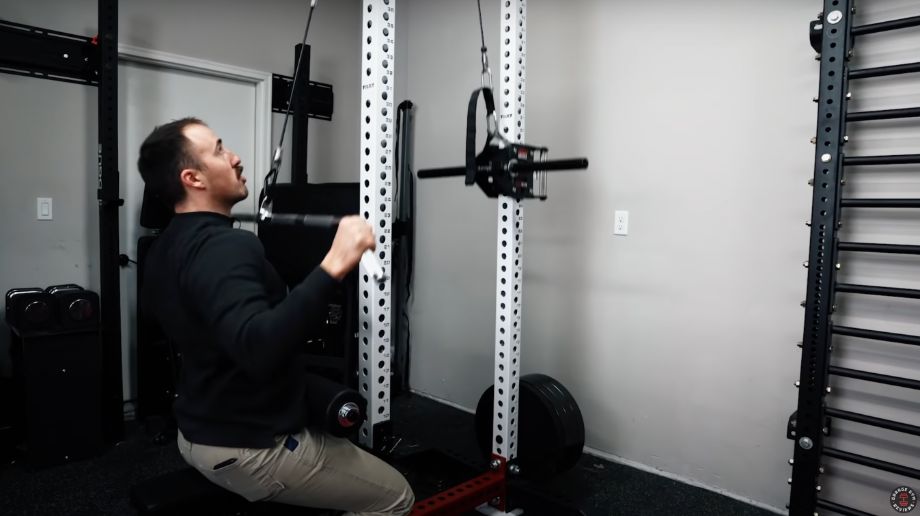
Versatile Exercise Equipment
Coop demonstrated how smoothly the equipment, including the DIY cable, moves when you’re using it for this purpose. Plus, you can choose any type of bench seat to maximize your personal comfort. There is a tiny bit of noise as the bushings gently rub up against the rack, though. However, it’s nothing that will distract most people who are exercising.
But, Coop wanted to maximize the versatility of this equipment. He did this by adding a pulley around the seated weight bench. By adding handles to this pulley system, you can now use it as a low or seated row with the low pulley added on. You can do exercises like standing bicep curls, tricep pushdowns, and more with this add-on. Because the trolley system is so good, “It can hold a lot more weight than people think and still be super smooth,” Coop says.
Cheaper Than a Cable Machine…Sort Of?
This is a little bit debatable since there are some reasonably priced cable attachments out there. As Coop noted, by using the trolley system that he used, it is “probably the most expensive DIY lat pulldown out there.” In fact, it is hard to price out all the different parts that went into this. But, it is still cheaper than a lot of the best cable machines, as many of those cost around $2,000 or more, even on Amazon. Then when you start adding on the different bells and whistles, the price only moves upwards.
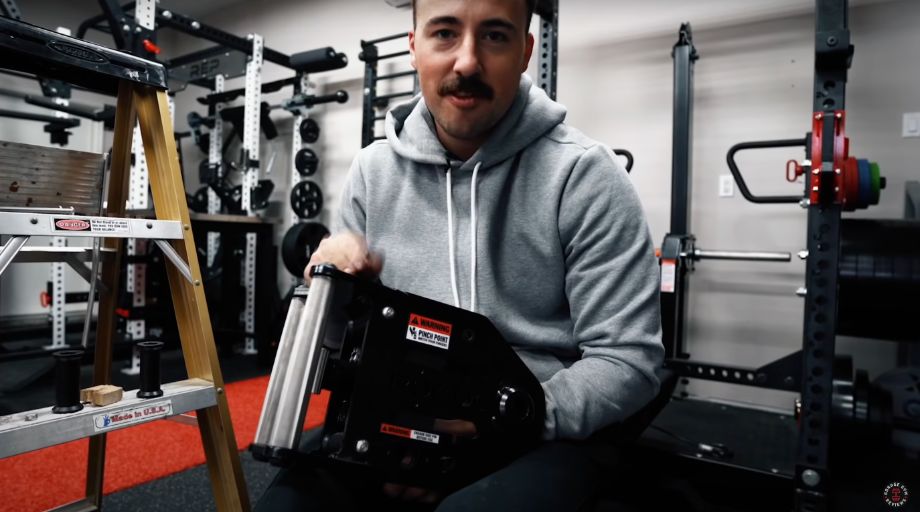
Materials List
Below is a list of the different pieces of equipment that we will need to put the lat pulldown together as part of your DIY gym.
- Rogue LT1 50 Cal Trolley System
- Modular uprights (erector-set style with 1-inch holes)
- Cross members (top and bottom). In the video, we use 24-inch cross members.
- Slinger
- Handles
- Weight pegs
- Utility pins spudding strap
- Cable system
- PVC pipe
- Carabiners
- Clamps
- Pulley (optional)
Steps
- Place two uprights side-by-side with a modular erector set design. The blueprints below show the desired design with the trolley system, slinger, and other attachments.
- Attach the uprights to the cross members, and then attach the rack feet to the sides for stability. After this, add a weight horn to the back for weight plates to balance out the weight from front to back and boost stability.
- Attach a slinger to the top of the cross-member design.
- Place a wooden block in the trigger system of the trolley to prevent the trolley from engaging. This is the critical step in the whole DIY project to transform the trolley into a free-floating trolley that can be used for a wide range of exercises.
- Attach the trolley system to the bottom of the upright. You can also add a wall mount for more stability.
- Also, attach a lat pulldown bar to the front side of your equipment.
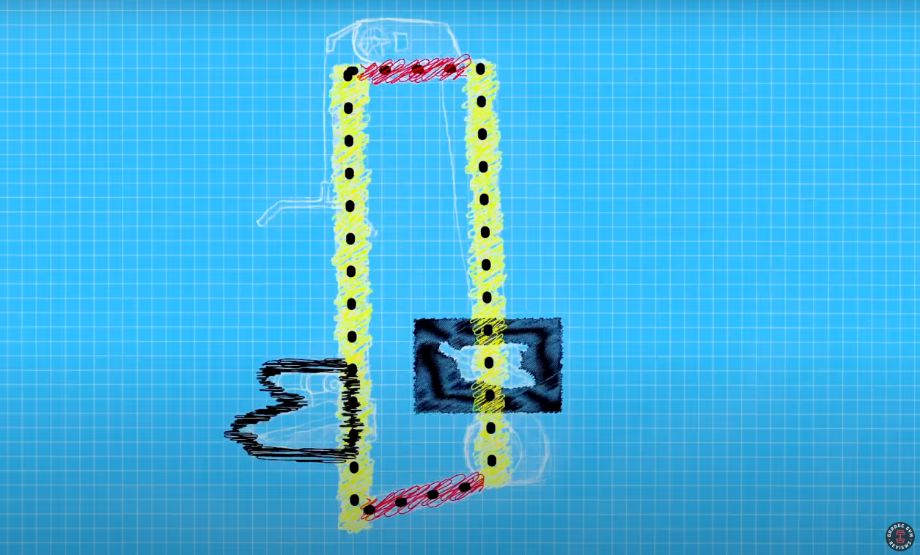
Expert Final Thoughts: DIY Lat Pulldown
As Coop notes, the final product is not perfect, even though it incorporates a lot of interesting hacks for building something that is simply not commercially available.
When demonstrating lat pulldowns, there was a ton of up-and-down movement in the bench that some users may find super frustrating. However, the goal of DIYing it, according to Coop, was to encourage manufacturers to produce a commercial version of this equipment. He was especially optimistic about Rogue Fitness’ ability to create this by adding a trolley system to their already existing heavy-duty upright stand. This would let you have a plate-loaded system in your home gym rather than a weighted stack, and this would open up a ton of different options for bodybuilding outside of the typical Olympic bar or dumbbell routines.
We really believe that this plate-loaded lat pulldown DIY machine is an integral piece of home gym equipment. It’s ideal for anyone who wants a full-body workout with versatility and is interested in upping their strength training game without having to use traditional barbells.
FAQs: DIY Lat Pulldown
What can I use instead of a lat pulldown?
If you’re interested in trying something other than lat pulldowns, you’ve got options. The seated cable row, dumbbell pull-over, and banded pulldown using a resistance band are great alternatives. In addition, if you’ve got a pull-up bar and want to do a classic bodyweight exercise, incorporate some pull-ups.
How can I do a lat pulldown at home?
You should be good to go if you have a functional trainer with some cable attachments or a power rack with a lat-pull-down attachment. If not, consider grabbing some resistance bands. Those can be attached to your door with a door anchor, and you can replicate the movement. You can use dumbbells for a dumbbell pullover to also work the lats.
How do you replicate lat pulldown with dumbbells?
The best option is to do a dumbbell pullover, which targets the lats. Our step-by-step guide on how to do a dumbbell pullover includes the following:
– The setup is similar to the hip thrust. Place your upper back/shoulder blades lengthwise on a flat bench and get tight in your glutes and core.
– Ensure your knees are at a 90-degree position, and hold the dumbbell underneath, with both hands above your head.
– Keep a parallel line from shoulders to knees, a soft bend in your elbows, and lower upper arms behind your head while keeping your elbows pointed forward.
– Lower to your preferred depth while maintaining a good body position.
– Pullover back to the starting position and reset and repeat for desired repetitions.
Further reading

Need advice on how to move an elliptical? This guide will help you through the heavy lifting. Read more

Legion Athletics is known around the internet for its pre-workout and grass-fed whey. However, does Legion’s Genesis Greens stack up to the same quality? Find out in our Legion Genesis Greens review! Read more

If you’re looking for a good cardio workout, you might be debating: StairMaster vs treadmill? We compared the two machines to help you decide. Read more
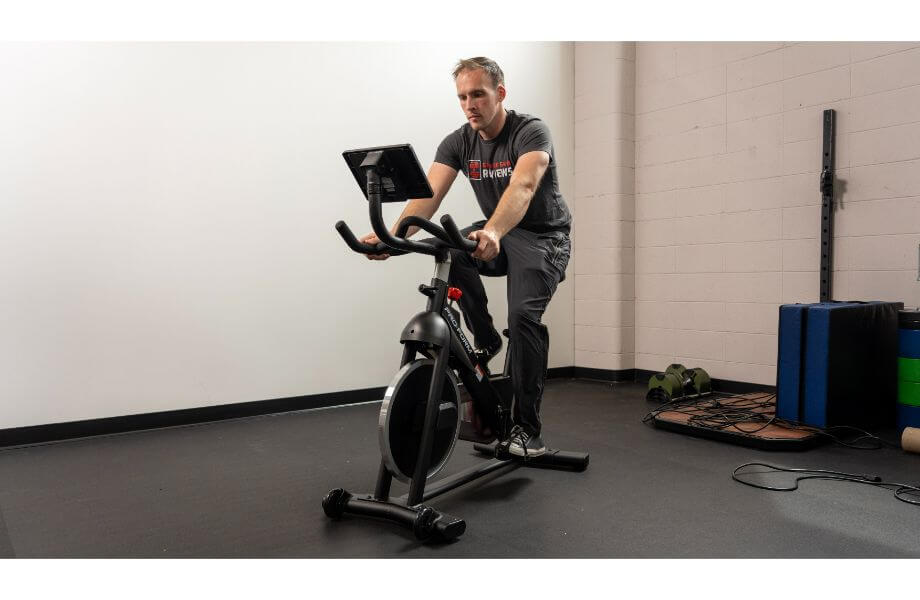
Looking for an exercise bike to take on a spin without breaking the bank? Find the best budget exercise bike for your needs here. Read more

